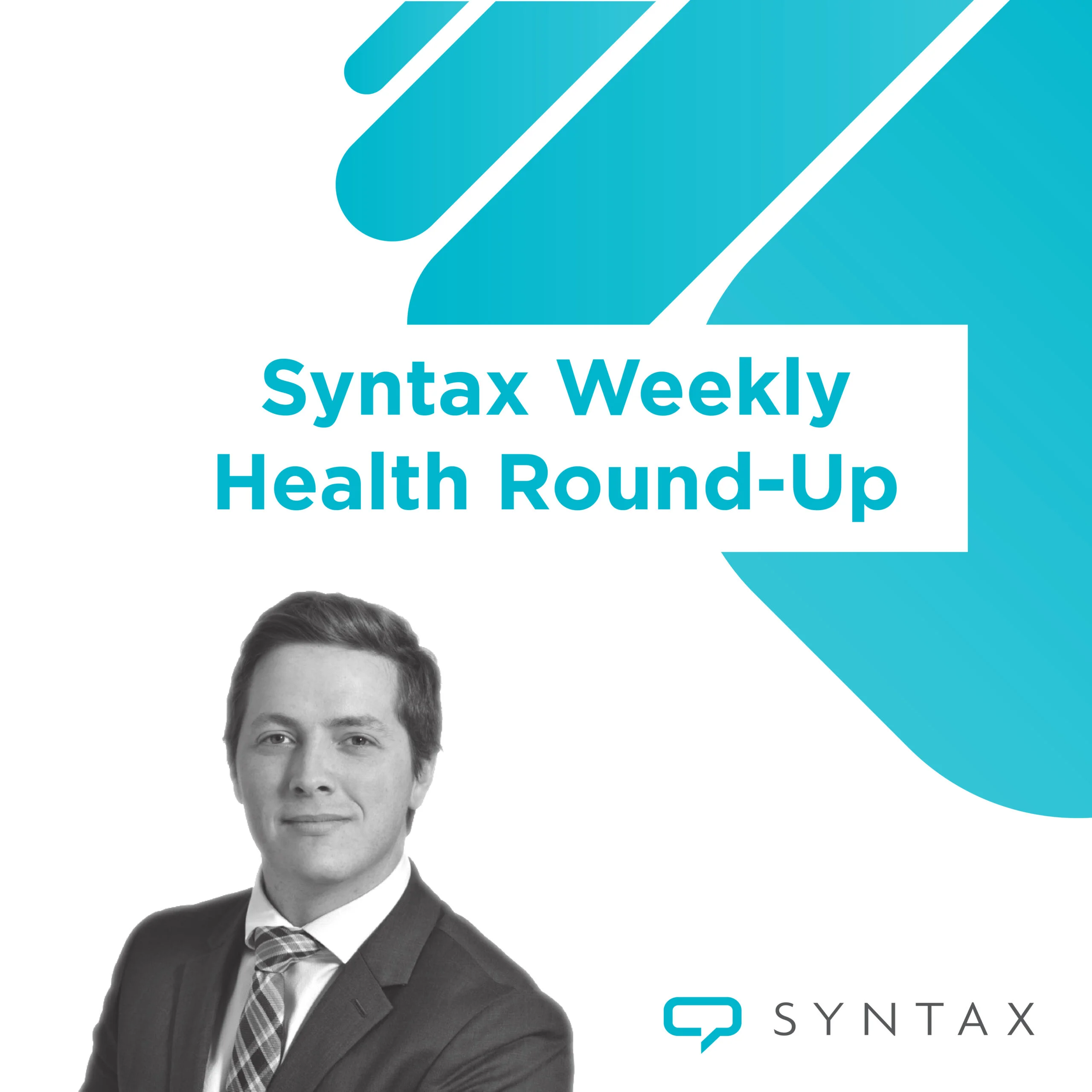Insights | Blog
Feds Table Budget 2024
The federal government tables Budget 2024 and the PEI government faces questions about creeping privatization in healthcare. On that, and more, here is your Syntax Weekly Health Round-Up.
On the Hill
- The Standing Committee on Health continued its ongoing study of the opioid epidemic and toxic drug crisis, hearing from public safety officials. The committee also resumed consideration of draft reports for its studies on the Patented Medicine Prices Review Board and on children’s health.
- The House of Commons began second reading debate of Bill C-64, the Pharmacare Act. While the Bill is likely to pass with NDP support, battle lines have been drawn early, with the Bloc calling for an opt-out clause for provinces and the Conservatives opposing the Bill as nothing more than a ploy to allow the government to maintain its confidence and supply agreement with the NDP through October 2025.
Around Government
- Finance Minister Chrystia Freeland tabled Budget 2024: Fairness for Every Generation. After last year’s budget delivered a historic near-$200 billion in funding for healthcare, Budget 2024 was light on new spending. Still, Budget 2024 invested in health human resources, Indigenous health, mental health, and health research. The budget also announced the government will create an advisory Council on Science and Innovation made up of leaders from the academic, industry, and not-for-profit sectors. Budget 2024’s key funding initiatives for health include:
- $1 billion over five years to expand access to school food programs
- $1.5 billion over five years to support the launch of the National Pharmacare Plan
- $562.5 million to support medically necessary services through the Non-Insured Health Benefits Program
- $3.2 million to upgrade Health Canada’s supply management capacity for drugs and medical devices
- $104.9 million to support First Nations’ self-determination in the design and delivery of health services in their communities
- $150 million to help provide rapid responses to emergent, critical needs related to the opioid crisis
- $253.8 million over four years and $84.3 million ongoing (annually) for student loan forgiveness for those who work in rural and remote areas of Canada
- $77.1 million to more effectively integrate internationally educated healthcare professionals into Canada’s health workforce
- $500 million to help community health organizations provide more mental health care to young people.
- $1.8 billion to increase core research grant funding through SSHRC, NSERC, and CIHR
Around the Dominion
- In P.E.I., the government sparred with opposition parties in the Legislature over public funding for private healthcare delivery following the province’s $25-million investment to create more than 50 new beds in for-profit long-term care facilities. This bled over into virtual care, where complaints over user fees and delayed access to virtual care were the focus of criticism relating to privatized care.
- In New Brunswick, Minister of Health Bruce Fitch announced that the province had reached a mutual agreement with the departing CEO of Horizon Health Network, Dr. John Dornan, avoiding the potential appeal of his termination that was scheduled to begin this month.
- In Saskatchewan, the government announced changes to the Midwifery Regulations, supporting midwives to provide care to their full scope of practice. The amendments, proposed by the Saskatchewan College of Midwives, allow midwives to prescribe and administer appropriate drugs, order x-rays where clinically appropriate, and conduct newborn hearing screenings.
- In Alberta, the government introduced a new physician compensation model framework that will provide alternative physician compensation for family physicians and rural generalists who are currently remunerated through fee-for-service or alternative physician compensation models. Features of the model will include signing an agreement to provide comprehensive care, providing a certain number of hours of service, providing most services in person rather than virtually, and committing to join the Central Patient Attachment Registry. The province also announced the creation of 12 regional advisory councils and one Indigenous advisory council to guide the work of health authorities. Each regional advisory council will consist of a maximum of 16 members, while the Indigenous advisory council will consist of a maximum of 22 members.


